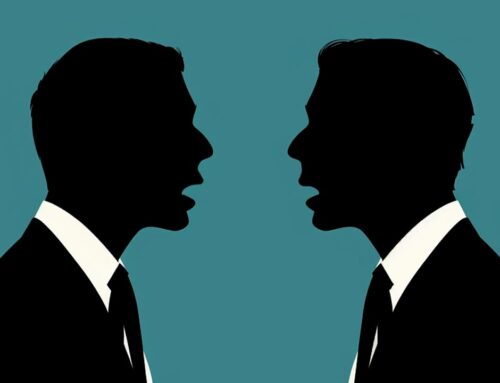Facilitate Effective Communication by Using Strategic Approaches That Create Clarity
Communication is the foundation of human interaction, and mastering it is essential for building strong personal and professional relationships. However, effective communication isn’t just about speaking or writing well—it’s about conveying information in a way that is understood as intended. The challenge many face is that the message often becomes convoluted, leading to misinterpretations, frustration, and inefficiency. Strategic communication offers a solution to these common barriers by emphasizing techniques that foster clarity.
Today’s article, you’ll learn how to employ strategic approaches to ensure that your communication is not only clear but impactful. You’ll explore various techniques rooted in psychology, focusing on understanding your audience, the importance of concise language, nonverbal cues, and active listening. Additionally, you’ll discover how empathy plays a significant role in shaping clear communication and how to harness it to strengthen connections with others.
Table of Contents
- Understanding the Psychology of Communication
- The Role of Empathy in Communication
- Strategies for Creating Clarity in Communication
- How to Tailor Your Communication for Different Audiences
- Top 5 Frequently Asked Questions
- Final Thoughts
- Resources
Understanding the Psychology of Communication
At the core of communication lies a psychological process that influences how messages are both sent and received. From a psychological standpoint, effective communication involves cognitive functions such as attention, perception, and memory. When these functions are misaligned, miscommunication occurs. To facilitate clarity, it’s critical to understand that people filter information through their experiences, emotions, and biases. This mental filtering can distort even the most well-intended message.
According to a study published in Psychological Science (2014), individuals tend to overestimate their communication skills, believing they are more clear than they actually are. This cognitive bias, known as the “illusion of transparency,” highlights the need for more strategic communication efforts to bridge the gap between what is said and what is understood.
By grasping these psychological underpinnings, you can better anticipate how your audience might interpret your words and adjust your communication accordingly.
The Role of Empathy in Communication
Why Empathy Clarifies Intent
Empathy, the ability to understand and share the feelings of another, is a powerful tool in communication. When you practice empathy, you are more likely to frame your message in a way that resonates with your audience. Empathy bridges the emotional and cognitive gaps that can lead to misunderstandings. It allows you to gauge your audience’s needs and respond appropriately, ensuring that your intent aligns with their perception.
Empathy and Conflict Resolution
In conflict situations, empathy can be especially useful. It enables you to step into the other person’s shoes and understand the emotions driving their reactions. By addressing these emotional triggers, you can de-escalate tension and facilitate more constructive dialogue. Research from the Journal of Conflict Resolution (2018) suggests that empathic communication reduces defensive responses and promotes a more cooperative atmosphere during disagreements.
Strategies for Creating Clarity in Communication
Using Concise and Direct Language
One of the most effective ways to ensure clarity is to use concise, direct language. Avoid jargon or overly complex sentences that might confuse your audience. The goal is to make your message as digestible as possible. Studies have shown that messages with fewer words are more likely to be understood and remembered.
Active Listening as a Clarity Tool
Active listening is a crucial strategy for achieving clarity in communication. It involves fully concentrating on the speaker, understanding their message, responding thoughtfully, and remembering what was said. By engaging in active listening, you can confirm that you have understood the other party’s message correctly, reducing the risk of miscommunication.
Nonverbal Communication: Reading Between the Lines
Nonverbal communication often carries more weight than spoken words. Facial expressions, posture, and gestures can all influence how your message is interpreted. By being mindful of your own body language and reading others’ nonverbal cues, you can ensure that your communication remains clear, even when words fall short.
How to Tailor Your Communication for Different Audiences
Understanding your audience is fundamental to clear communication. Tailoring your message involves considering factors such as age, cultural background, level of expertise, and emotional state. For example, when communicating with a technical audience, using industry-specific terminology may enhance clarity. Conversely, when speaking to a general audience, simplifying complex concepts is more effective.
Audience analysis helps you determine not only what to say but how to say it, ensuring that your message is both clear and impactful.
Top 5 Frequently Asked Questions
Final Thoughts
The most important takeaway from this article is that clarity in communication is not achieved by accident—it requires strategic approaches grounded in psychological understanding. By employing empathy, using concise language, practicing active listening, and being mindful of nonverbal cues, you can significantly enhance the clarity of your communication. Tailoring your message to your audience further ensures that what you intend to communicate is what is actually understood. As communication continues to evolve, especially in the digital age, mastering these techniques will become increasingly essential.
Resources
-
- Journal of Conflict Resolution (2018) Empathy and Conflict Resolution: The Role of Emotional Intelligence
- Psychological Science (2014) The Illusion of Transparency: Overestimating How Clearly We Communicate
- Goman, C.K. (2012) The Silent Language of Leaders: How Body Language Can Help—or Hurt—How You Lead. Jossey-Bass





Leave A Comment